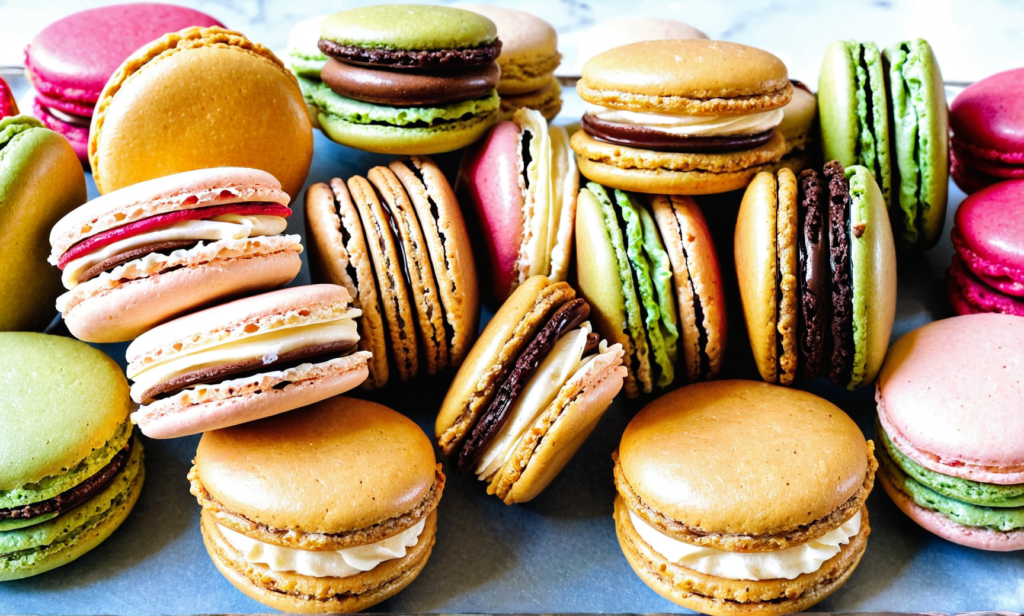Discover the Joy of Vegan Macarons with Dairy-Free Delight
For those with a penchant for the finer sweets in life, the classic French macaron has long been a symbol of exquisite pastry perfection. However, the traditional recipe’s reliance on dairy-based ingredients can exclude those who favor plant-based alternatives. But don’t despair, dairy-free darlings! Vegan macarons are making waves in the baking world, and they’re just as delectable as their dairy counterparts.
Whether you aim to cater to a vegan lifestyle, manage lactose intolerance, or simply seek to explore the vast horizon of plant-based pastries, baking with a condensed milk alternative is your golden ticket to an inclusive patisserie paradise.
The Secret’s in the Substitute: Crafting Vegan Condensed Milk
Create your own vegan condensed milk with ease—it’s a sweet swap that’s stirring up the baking scene. This dairy-free marvel can replicate the texture and sweetness of its traditional counterpart using plant-based milks coupled with sugar. Common choices like almond, soy, or oat milk simmered down with a touch of sweetener can transform into a thick, luscious concoction that’s primed for your pastry endeavors.
Achieving Aeration: Mastering the Meringue
It’s all about the meringue when it comes to those coveted, crisp macaron shells with their signature feet. Achieving that airy texture without egg whites might seem daunting, but fear not. Aquafaba—the liquid from a can of chickpeas—steps in as the perfect vegan alternative, whisked into stiff peaks with a dash of cream of tartar for stability. This magical transformation not only mimics the fluffiness required for the perfect macaron but does so with flair, offering a flavor that’s subtle and surprisingly suitable for sweet treats.
The Alchemy of Almond Flour
Almond flour, the backbone of any macaron, thankfully needs no modification to fit into our dairy-free narrative. This fine, nut-based flour is inherently gluten-free and vegan, providing the ideal texture for our indulgent little sandwich cookies. When sifted and folded into our meringue mixture with precision, it paves the way for a shell that’s smooth on top and delightfully chewy within.
Embracing Bold Flavors and Fillings
Password for a successful vegan macaron is variety. From the zesty bursts of citrus to the deep allure of dark chocolate ganache made with dairy-free chocolate, there’s no limit to the fillings you can sandwich between those ethereal shells. Experimentation is the sheer joy of the vegan baker, with options for buttercream fillings utilizing plant-based butters and milks, or even jams and jellies for a fruit-forward twist.
Bake with Intention, Indulge Without Reservation
While crafting these petite treats, embrace the precision that baking commands, especially in the world of vegan confections. Small tweaks and attention to detail can lead to significant triumphs. Remember, the art of baking macarons, vegan or otherwise, is a practice in patience and passion. And as your shells rise in the oven, undistinguishable from their non-vegan counterparts, you’ll know the magic of dairy-free baking has come to fruition.
Whether poised with a pastry bag piping delicate rounds or sandwiching shells with a rainbow of creamy fillings, the journey to creating the perfect vegan macaron is sure to awaken a sense of excitement and satisfaction within any culinary explorer. So, preheat those ovens and prepare for a baking adventure that promises to end in sweet, cruelty-free indulgence.
Here is a more formal recipe to try out:
Ingredients:
- For the Macaron Shells:
- 3/4 cup (100g) almond flour
- 1 cup (125g) powdered sugar
- 1/2 cup (120ml) aquafaba (liquid from a can of chickpeas)
- 1/4 cup (50g) granulated sugar
- 1/2 teaspoon cream of tartar
- 1 teaspoon vanilla extract (optional)
- Gel food coloring (optional)
- For the Filling:
- 1/2 cup (112g) vegan butter, softened
- 2 cups (250g) powdered sugar, sifted
- 1 teaspoon vanilla extract
- 2 tablespoons dairy-free milk (if needed, for consistency)
- Flavors or colors (optional)
Instructions:
- Prepare the Ingredients:
- Sift the almond flour and powdered sugar together into a large bowl. Repeat the sifting process two to three times to ensure there are no lumps, which is crucial for the smooth tops of macarons.
- In a separate, clean, and grease-free bowl, beat the aquafaba with an electric mixer until soft peaks form. Add the cream of tartar and continue to beat, gradually adding the granulated sugar until stiff peaks form and the mixture is glossy. If using, add vanilla extract and food coloring at this stage.
- Macronage Process:
- Gently fold the sifted almond flour and powdered sugar into the whipped aquafaba using a spatula, using about 30-50 folds. The final mixture should flow like lava and form a ribbon that slowly dissolves back into the mixture.
- Pipe and Rest:
- Transfer the batter to a piping bag fitted with a round tip. Pipe onto baking sheets lined with parchment paper or a silicone mat, forming circles about 1 inch in diameter.
- Tap the baking sheet firmly on the counter to remove air bubbles. Let the macarons sit at room temperature for 1-2 hours until they form a skin and are no longer sticky to the touch.
- Bake:
- Preheat your oven to 300°F (150°C). Bake the macarons for about 20 minutes, or until they rise and form a “foot.” Allow them to cool completely on the baking sheet before removing.
- Prepare the Filling:
- Beat the vegan butter until smooth, then gradually add the powdered sugar and vanilla extract, beating until light and fluffy. Adjust the consistency with dairy-free milk if necessary. Add any desired flavors or colors.
- Assembly:
- Pair macaron shells by size. Pipe a dollop of filling on one shell of each pair, then gently sandwich with the other shell.
- Rest:
- For best results, let the filled macarons rest in the refrigerator for at least 24 hours to meld the flavors and achieve the perfect texture.
Enjoy your vegan macarons as a sophisticated treat that impresses with both its ethics and its elegance! Remember, making macarons requires patience and practice, so don’t be discouraged if your first batch isn’t perfect.

